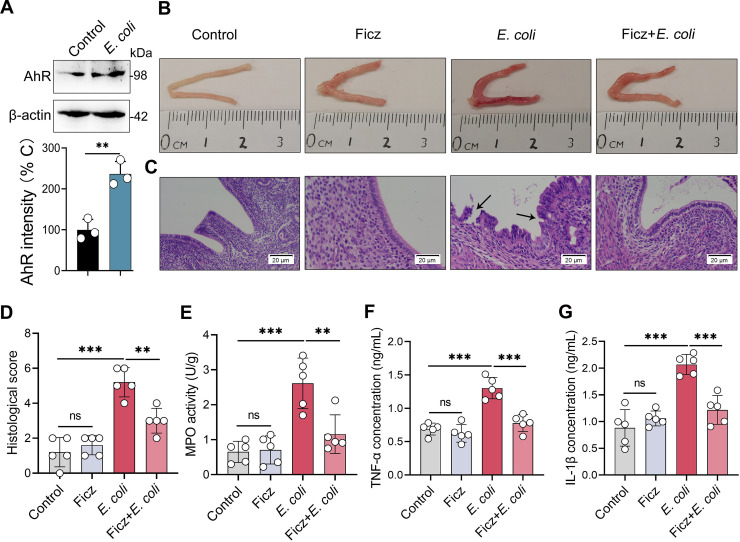FIG 1.
AhR activation improves the immunopathology of E. coli-induced endometritis in mice. (A) Uterine AhR expression was assessed in control and E. coli-induced endometritis mice. Mice were treated with E. coli (108 CFU/30 μL on each side of uterus) by intrauterine injection. After 24 h, uterine tissues were harvested and determined by Western blotting (n = 3). (B-F) Mice were pretreated with Ficz (50 μg/kg BW) intraperitoneally 1 h before E. coli administration (108 CFU/30 μL on each side of uterus). The control group was treated with equal DMSO intraperitoneally and PBS in the uterus. (B-C) Representative macroscopic images (B) and H&E-stained images (C) from different treated mice are shown. E. coli-treated group had increased macroscopic inflammatory changes compared with other groups, including redness and edema. The black arrow indicates endometrial injury (scale bar = 20 μm). (D) Histological scores in different treatment groups were performed (n = 5). (E-G) MPO activity (E), TNF-α (F), and IL-1β (G) levels from the indicated mice were determined (n = 5). Data are expressed as the mean ± SD. Two-tailed Student's t test (A) and one-way analysis of variance (ANOVA; D-G) were performed. *, P < 0.05; **, P < 0.01; and ***, P < 0.001 indicate significant differences. ns, no significance.

